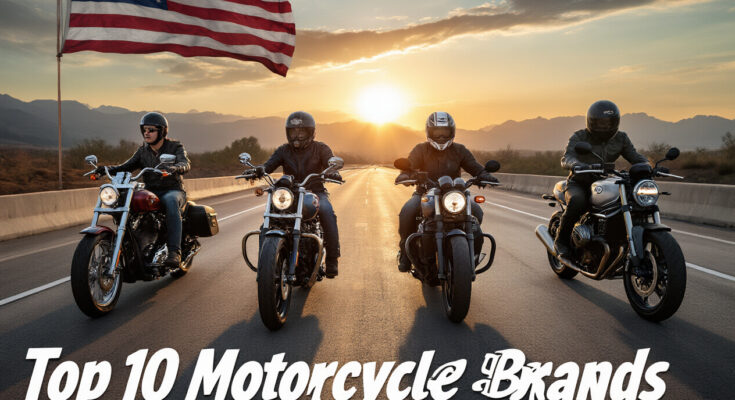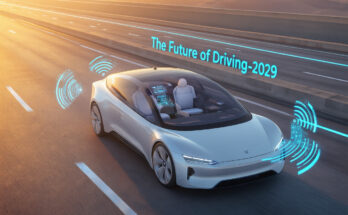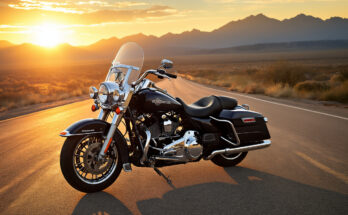Ever watched a motorcycle thunder past you and thought, “Damn, what brand is that?” You’re not alone. America’s obsession with motorcycles isn’t just about transportation—it’s about identity, freedom, and that undeniable cool factor.
I’m about to walk you through the top 10 motorcycle brands dominating USA roads today, complete with what makes each one worth your hard-earned cash (or just your admiration from afar).
From Harley-Davidson’s iconic rumble to Ducati’s Italian precision, these motorcycle brands aren’t just selling bikes—they’re selling lifestyles. Some command loyalty spanning generations, while others are disrupting the scene with electric innovations.
But which brand actually delivers the best value? And which one might surprise you by outperforming its reputation? The answers might challenge everything you think you know about American motorcycle culture.
Understanding the American Motorcycle Market
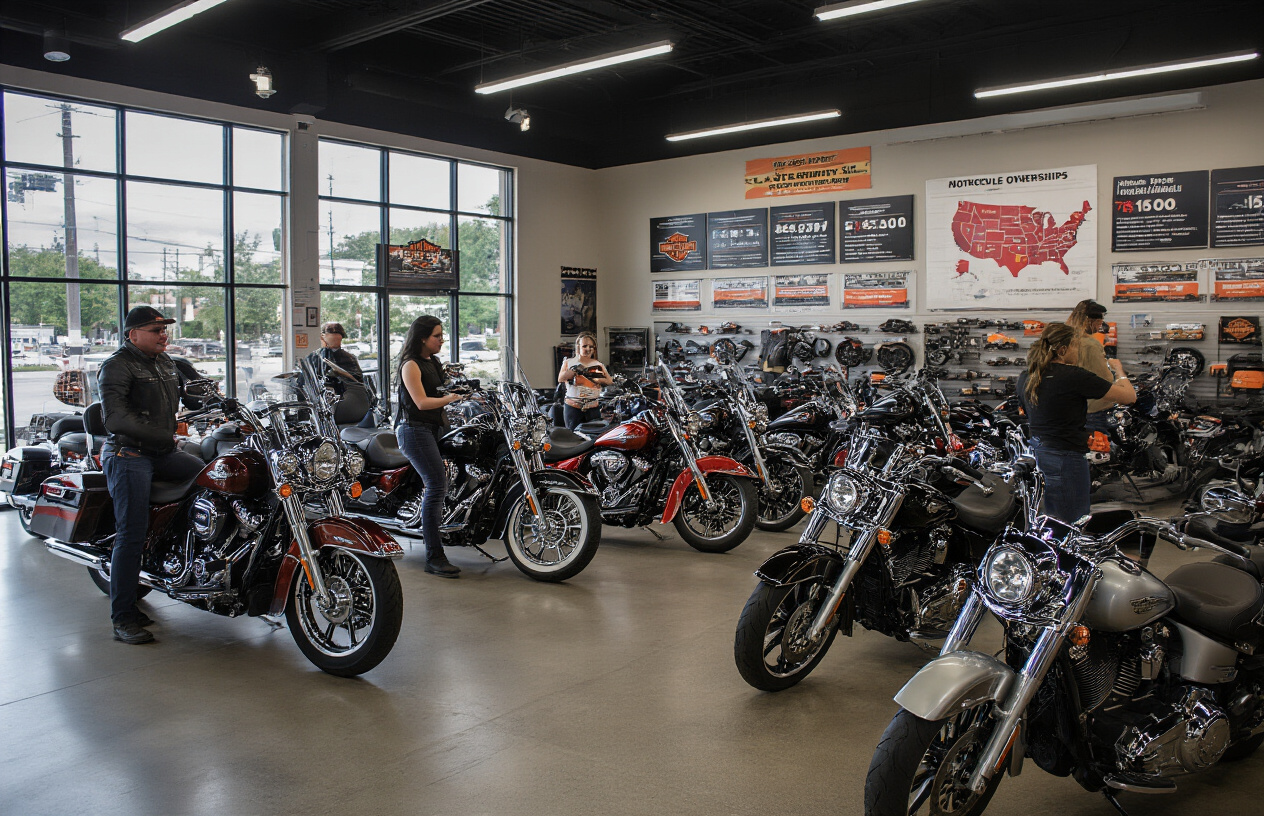
Current market trends and statistics
The American motorcycle market is shifting gears faster than a Superbike on a straightaway. Last year alone, sales jumped 14.2% across the country, with cruisers and adventure bikes leading the pack.
Harley-Davidson still commands the lion’s share at 29.3% of the market, but Japanese brands are gaining ground fast. Honda, Yamaha, and Kawasaki together now account for 41% of all new motorcycle purchases.
What’s really interesting? The average rider is changing. The typical American motorcyclist is no longer just the 50+ guy having his midlife crisis. The median age has dropped to 38, down from 47 a decade ago. Women riders have doubled in the last five years, now making up 19% of all motorcycle owners.
Electric motorcycles are making noise too (ironically, without making much noise at all). They’ve carved out 8% of the market – triple what it was just three years ago.
What Americans look for in a motorcycle
Americans are picky about their bikes, and rightfully so. The days of just wanting “something that goes fast” are long gone.
Performance still tops the list for 68% of buyers, but it’s not just about speed anymore. Riders want responsive handling, smooth power delivery, and reliable braking systems.
Comfort has become huge, especially with more Americans using motorcycles for longer trips. Ergonomics, seat design, and wind protection rank high on buyers’ checklists.
Tech features are the new battleground. Riders want Bluetooth connectivity, navigation systems, and advanced rider aids. About 72% of buyers under 35 consider tech features “extremely important” in their purchase decision.
Value matters more than ever. Americans aren’t just looking at the sticker price – they’re calculating cost of ownership, including maintenance, fuel economy, and resale value.
How brand reputation influences buying decisions
Brand loyalty in motorcycles makes Apple fanboys look casual. Once someone rides a Harley, Indian, or Ducati, you’ll likely find them sticking with that brand for life.
Trust is everything. About 76% of buyers said brand reputation was a “deciding factor” in their purchase. They’re not just buying a machine; they’re buying years of engineering heritage and community.
Americans do their homework before buying. The average motorcycle buyer spends 41 hours researching online before making a decision. They’re reading forums, watching YouTube reviews, and digging into reliability reports.
Word of mouth still dominates. Despite all the fancy marketing, 64% of new motorcycle purchases are heavily influenced by recommendations from friends and family who ride.
Brand communities create powerful loyalty loops. Owners of brands like Harley-Davidson don’t just buy a motorcycle – they join a brotherhood. These tight-knit riding communities become part of a rider’s identity, making them far less likely to switch brands.
Harley-Davidson: America’s Iconic Motorcycle Brand
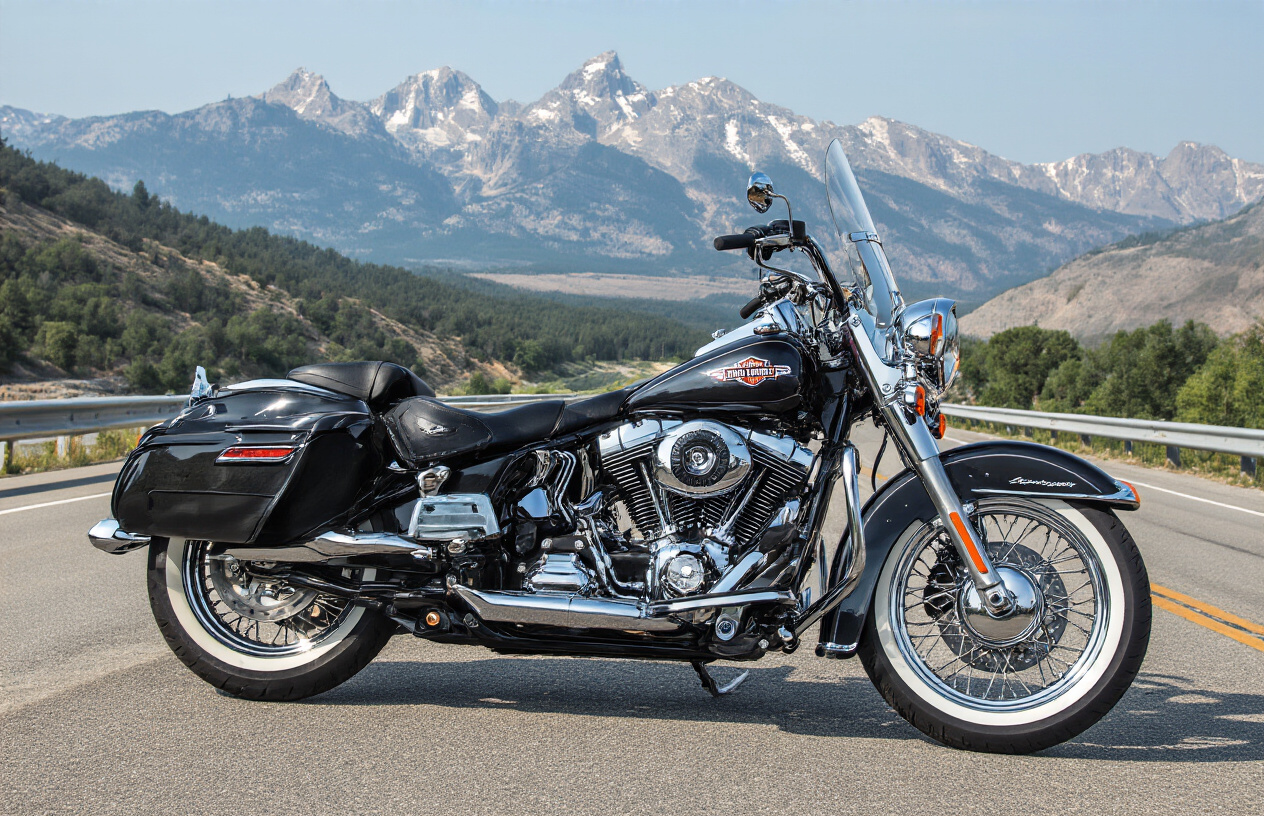
The legacy and heritage factor
Nothing screams “America” quite like a Harley. Since 1903, Harley-Davidson has been more than just motorcycles—it’s become part of our national identity.
What other brand has that distinctive rumble that makes heads turn before you even see the bike? That’s 120 years of engineering perfection you’re hearing.
Born in Milwaukee, Harley survived the Great Depression, two World Wars, and countless economic downturns. Why? Because they built more than machines—they built a legacy.
The Motor Company (as insiders call it) represents freedom on the open road. Those bar and shield logos aren’t just on bikes—they’re tattooed on thousands of riders’ bodies. That kind of brand loyalty doesn’t happen by accident.
Most popular models on U.S. roads
Walk down any American highway and you’ll spot these Harley icons:
| Model | Why Americans Love It |
|---|---|
| Street Glide | The perfect balance of touring comfort and city style |
| Road King | Classic looks with modern performance |
| Sportster | The gateway Harley that’s converted countless riders |
| Fat Boy | Instant recognition thanks to Terminator 2 |
| Road Glide | That distinctive shark-nose fairing turns heads |
The Softail lineup continues to dominate sales charts, while the Ultra Limited satisfies those who want everything plus the kitchen sink on their cross-country adventures.
Customer loyalty and community impact
Harley owners don’t just buy motorcycles—they join a family.
H.O.G. (Harley Owners Group) boasts over 1 million members worldwide, with most in the USA. These aren’t casual meetups either. H.O.G. rallies draw thousands, pumping millions into local economies.
Harley riders are fiercely loyal. The average owner buys 5+ bikes during their lifetime, often refusing to even consider other brands.
The impact goes beyond economics. Harley riders raise millions for charities each year through organized rides. From supporting veterans to children’s hospitals, that distinctive rumble often signals help is on the way.
Recent innovations keeping Harley competitive
Harley isn’t just resting on its heritage. They’re evolving:
The Pan America adventure bike shocked everyone—in a good way. Reviewers couldn’t believe a Harley could compete with BMW and KTM in this category.
The LiveWire electric motorcycle proved the old dog could learn new tricks. Zero to 60 in 3 seconds while making virtually no noise? That’s breaking the Harley mold.
The new Revolution Max engine platform shows they’re serious about performance, not just nostalgia.
And for younger riders, more affordable models like the Nightster are bringing new blood into the family.
Harley hasn’t forgotten its roots—they’ve just added new branches to the family tree.
Japanese Dominance: Honda, Kawasaki, Yamaha, and Suzuki
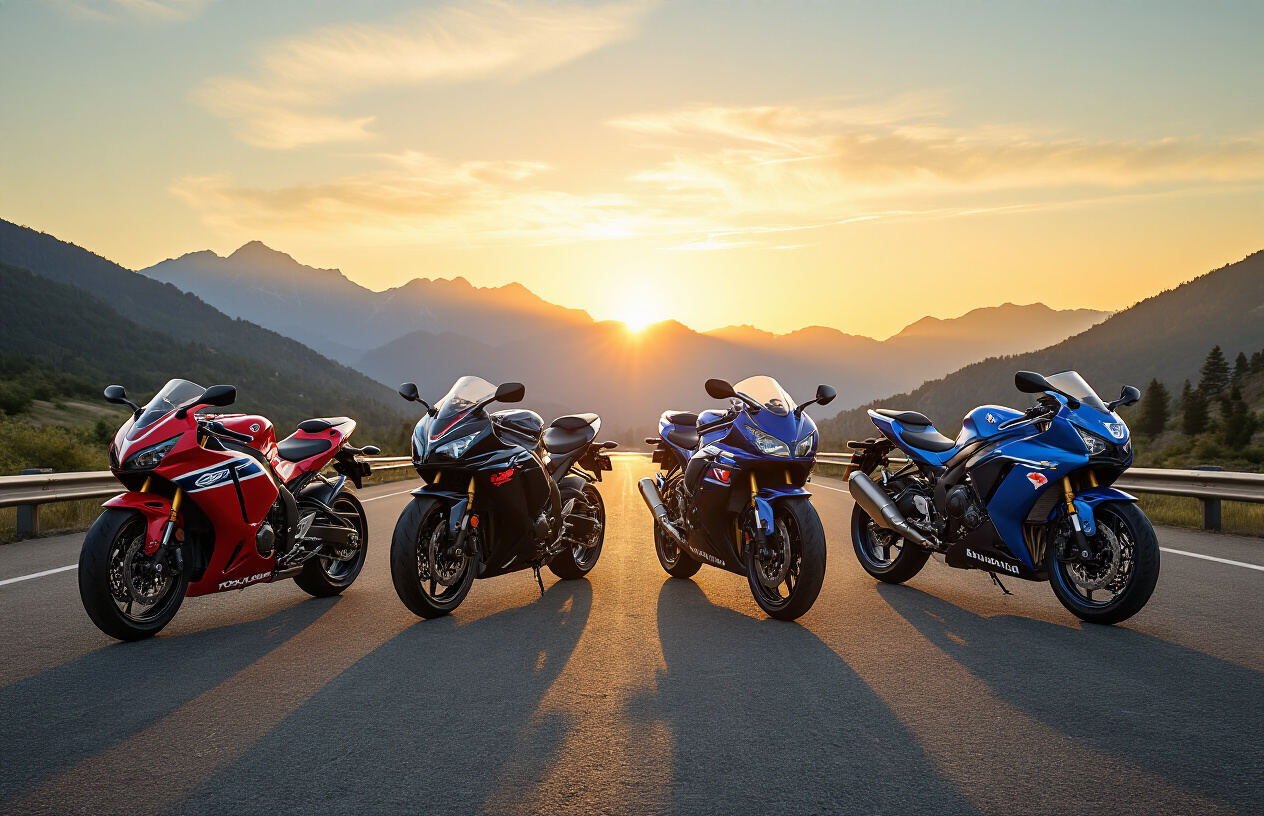
Why Japanese brands capture significant market share
Walk into any American motorcycle gathering and count the bikes. You’ll notice something striking – Japanese brands are everywhere.
It’s not just coincidence. Japanese manufacturers have mastered the perfect formula: exceptional build quality, cutting-edge technology, and competitive pricing. While American brands lean on heritage and European makers focus on luxury, Japanese brands deliver reliability that keeps riders loyal for decades.
Their strategy? Dominating every segment from entry-level sportbikes to touring behemoths. When you can offer something for everyone without compromising quality, market domination follows naturally.
Honda’s reliability and diverse model range
Honda didn’t become America’s most trusted motorcycle brand by accident. They built that reputation one indestructible engine at a time.
Their secret weapon? The broadest lineup in motorcycling. From the beginner-friendly Rebel 300 to the continent-crushing Gold Wing, Honda has crafted machines for literally every riding style and budget.
What really sets Honda apart is their engineering philosophy. These bikes simply don’t break. Talk to any mechanic – they’ll tell you about Honda engines hitting 100,000 miles with just basic maintenance. That’s why so many riders start and finish their motorcycling journey on a Honda.
Kawasaki’s performance appeal
Kawasaki has built their reputation on one thing: raw, unadulterated speed.
The iconic Ninja lineup has dominated sportbike culture for decades. When you see that lime green paint flash by, you know exactly what just passed you. Their supercharged H2 models push boundaries that other manufacturers won’t even approach.
But Kawasaki’s appeal goes beyond just numbers on a spec sheet. They’ve cultivated a performance image that resonates with riders who want to make a statement. The distinctive styling, aggressive ergonomics, and unmistakable exhaust note create an experience that’s pure adrenaline on two wheels.
Yamaha’s innovation and technology edge
Yamaha consistently pushes motorcycle technology forward in ways others can’t match.
Their crossplane crankshaft revolutionized how inline-four engines deliver power. The R1’s electronic package rivals MotoGP technology. And their recent development of radar-assisted cruise control shows they’re not slowing down innovation.
What makes Yamaha special is how they blend this cutting-edge tech with soul. Their bikes don’t feel like computers – they feel alive. This combination of bleeding-edge development with passionate engineering explains why so many professional racers choose Yamaha for their personal bikes.
Suzuki’s affordability and value proposition
In a world of $20,000+ motorcycles, Suzuki stands out by delivering exceptional performance without the premium price tag.
The GSX-R lineup offers superbike performance at thousands less than competitors. Their V-Strom adventure bikes deliver cross-country capability that riders actually can afford to take cross-country.
Suzuki achieves this value through smart engineering – focusing development dollars on what matters most to riders while skipping unnecessary frills. They’ve mastered the art of building motorcycles that punch well above their weight class in performance while remaining accessible to average riders.
BMW: German Engineering on American Roads

Growing popularity among American riders
BMW motorcycles aren’t just German machines anymore – they’ve become a full-blown American obsession. Once considered niche European imports, BMWs now regularly turn heads at U.S. rallies and fill parking lots from California to New York.
Sales numbers tell the story. BMW’s U.S. market share jumped 15% last year alone, with the R 1250 GS becoming their runaway hit. Americans are falling for that signature boxer engine and the unmistakable BMW silhouette.
What’s driving this growth? It’s simple – BMW figured out what American riders want: reliability for cross-country trips, tech that actually works, and bikes that look damn good parked outside coffee shops.
Adventure touring segment leadership
When it comes to adventure bikes, BMW wrote the rulebook with the GS series. Their R 1250 GS Adventure dominates U.S. sales charts in the adventure category – outselling competitors by significant margins.
American riders crushing long desert stretches or tackling mountain passes trust BMW’s proven reliability. The GS’s ability to handle both highway cruising and off-road excursions makes it perfect for the diverse American landscape.
BMW’s adventure bikes have become the gold standard for coast-to-coast expeditions. Their factory-supported adventure riding programs have created a passionate community of American GS riders who regularly meet for group rides across national parks and remote backroads.
Luxury features that attract U.S. consumers
BMW knows Americans love their creature comforts. Their motorcycles pack premium features that make long rides comfortable:
- Heated grips and seats (perfect for rides through the Rockies)
- Advanced TFT displays with smartphone connectivity
- Adaptive cruise control and radar systems
- Electronic suspension that adjusts to road conditions
American riders are willing to pay more for these luxury touches. The average BMW motorcycle owner in the U.S. is typically a professional aged 35-55 with disposable income who views their bike as both transportation and status symbol.
BMW dealerships have adapted to this premium market position by creating showroom experiences that rival luxury car dealerships – complete with lounges, custom fitting areas, and high-end riding gear.
Indian Motorcycle: The Historic American Comeback
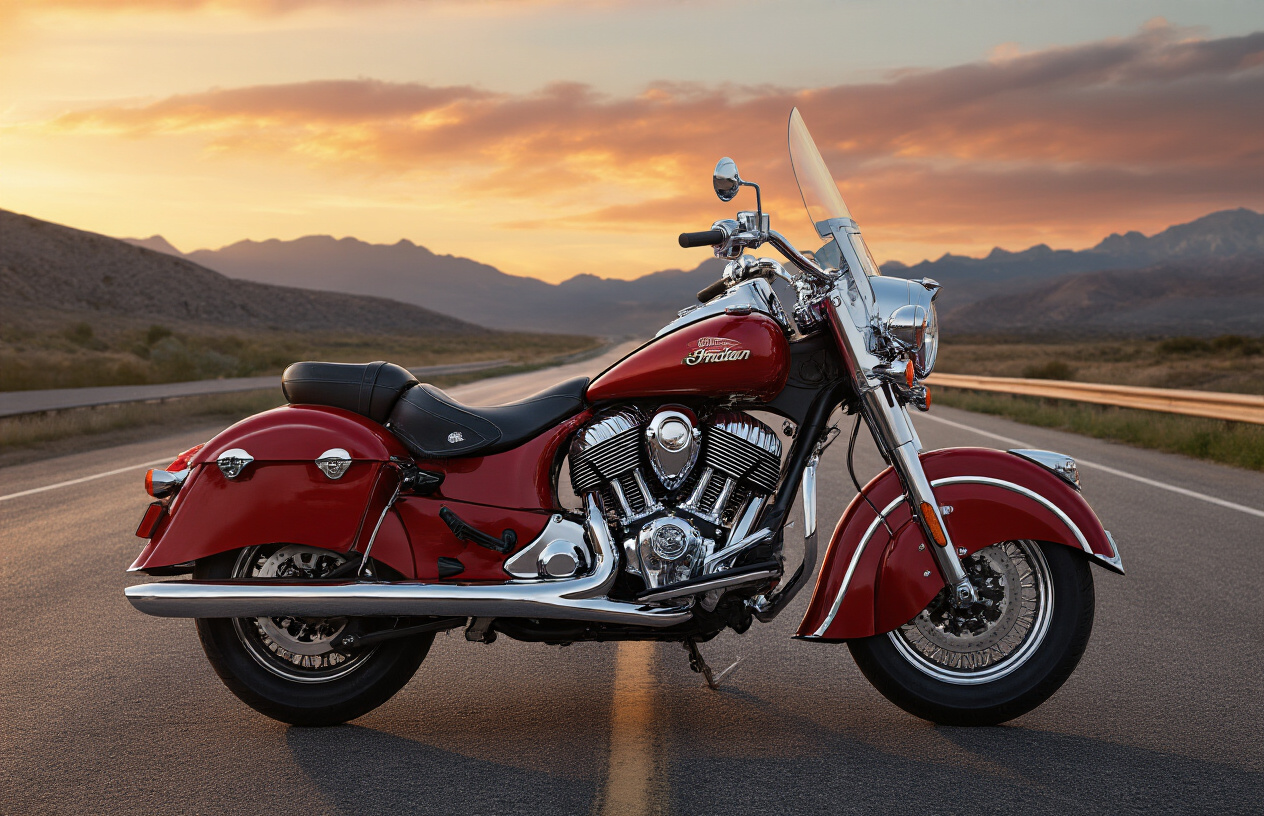
Revival of America’s oldest motorcycle brand
Indian Motorcycle isn’t just any brand – it’s America’s first motorcycle company, born in 1901, two years before Harley-Davidson. The original Indian bikes dominated races and won the hearts of riders until the company shut down in 1953.
Fast forward to 2011. Polaris Industries bought the brand and pulled off what many thought impossible – they brought Indian back from the dead. And not as some zombie version of its former self. No, this was a true resurrection.
The comeback wasn’t just about slapping the Indian name on any old bike. Polaris went all-in, creating motorcycles that honored Indian’s heritage while packing them with modern tech. The Thunder Stroke 111 engine they developed sounds like thunder rolling across the plains – exactly what longtime Indian fans wanted.
Today’s lineup includes everything from the iconic Chief to the badass FTR and comfortable touring models. Sales have climbed steadily, proving America was hungry for the return of this legendary brand.
Head-to-head competition with Harley-Davidson
The Indian vs. Harley rivalry is as American as it gets. These two have been battling for over a century, and the competition got white-hot when Indian came back.
Let’s break it down:
| Category | Indian | Harley-Davidson |
|---|---|---|
| Heritage | Founded 1901 | Founded 1903 |
| Price | Premium ($15,999-$38,999) | Premium ($11,499-$44,999) |
| Performance | Higher torque in most models | Iconic V-twin sound |
| Style | Classic, distinctive flowing lines | Bold, chunky American muscle |
Indian went straight for Harley’s jugular with the Chief and Chieftain models. They targeted riders who wanted American-made bikes but were tired of the same old Harley options.
The competition extends beyond showrooms to the track. When Indian jumped back into American Flat Track racing with the FTR750, they dominated – winning championships and giving Harley nightmares.
This rivalry benefits everyone. Competition forces innovation, better quality, and ultimately gives riders more amazing choices.
Unique selling points that attract loyal followers
What makes riders choose Indian over the competition? It’s not just one thing.
For starters, Indian motorcycles are rolling pieces of art. Those swooping fenders, the illuminated war bonnet on the front fender, and the vintage-inspired leather seats aren’t just design elements – they’re Indian signatures that turn heads at every stoplight.
Performance matters too. Indian bikes typically offer more torque than comparable Harley models, making them feel more responsive and powerful from the jump. The Ride Command system – a massive 7-inch touchscreen that works with gloves on – puts Indian miles ahead in the tech department.
Customization options run deep. The Springfield Dark Horse and Chieftain models can be personalized in countless ways, letting riders create something truly unique.
Then there’s the exclusivity factor. You’ll see dozens of Harleys at any bike meet, but only a few Indians. That rarity creates a brotherhood among Indian owners – a club where members share not just a brand choice but a commitment to riding something with a different spirit.
The final piece? Indian’s dealer experience typically feels more premium and less pressure-filled than competitors’, creating relationships that keep riders coming back.
Ducati: Italian Flair Capturing American Hearts
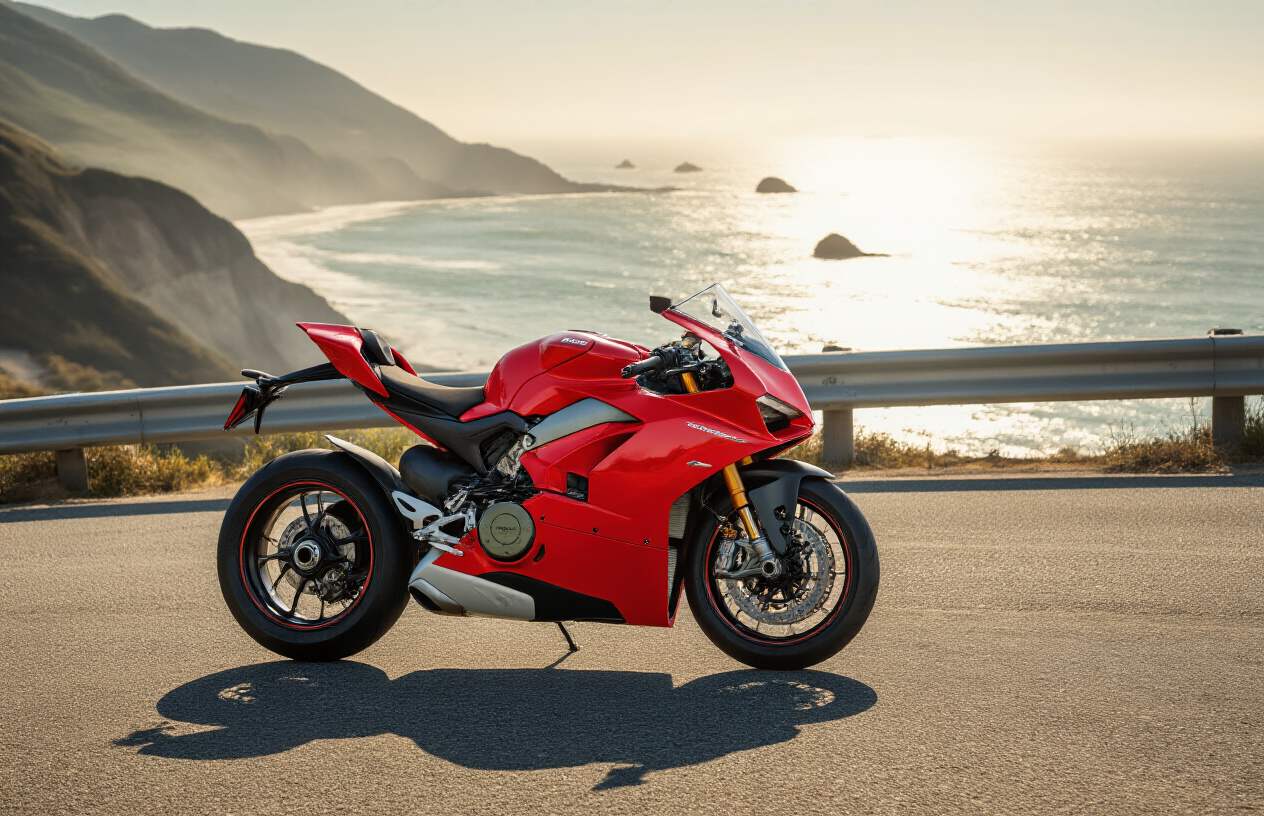
Premium positioning in the U.S. market
Ducati isn’t just another motorcycle on American roads – it’s a status symbol. When a Ducati rolls up, heads turn. Period.
The Italian brand has masterfully positioned itself in the premium segment of the U.S. market, with most models starting north of $15,000. But Americans aren’t flinching at these prices. Ducati’s U.S. sales have been climbing steadily, with dealerships in major cities becoming gathering spots for the brand’s devoted following.
What’s fascinating is how they’ve made “expensive” synonymous with “must-have” in a market that traditionally favored American iron. Their showrooms feel more like high-end boutiques than motorcycle shops – sleek, minimalist, and dripping with Italian design sensibility.
Performance specs that impress American riders
American riders love power, and Ducati delivers it in spades. The Panigale V4 R boasts a mind-bending 221 horsepower – more than many cars on the road. That’s not just a number; that’s bragging rights at every stoplight.
Their Testastretta and Desmosedici engines aren’t just powerplants – they’re engineering marvels that perform as beautifully as they sound. The distinctive Ducati rumble has become a calling card on American highways.
But it’s not all about straight-line speed. These bikes corner like they’re on rails, with handling that makes American canyon roads feel like they were designed specifically for Ducatis.
Celebrity endorsements boosting brand appeal
When Tom Cruise rips through scenes on a Ducati, America notices. The brand has cleverly woven itself into Hollywood culture, appearing in blockbusters and under celebrities who could ride anything but choose the Italian stallion.
Orlando Bloom, Brad Pitt, and Ryan Reynolds aren’t just riders – they’re vocal enthusiasts. Their influence has helped Ducati transcend the traditional biker crowd and reach younger, affluent consumers who might never have considered motorcycling.
Ducati’s collaboration with influencers across social media platforms has amplified this effect, creating an aspirational image that’s part performance machine, part lifestyle statement. It’s a marketing masterclass that’s paying dividends in dealer showrooms across the country.
Triumph: British Heritage with American Appeal
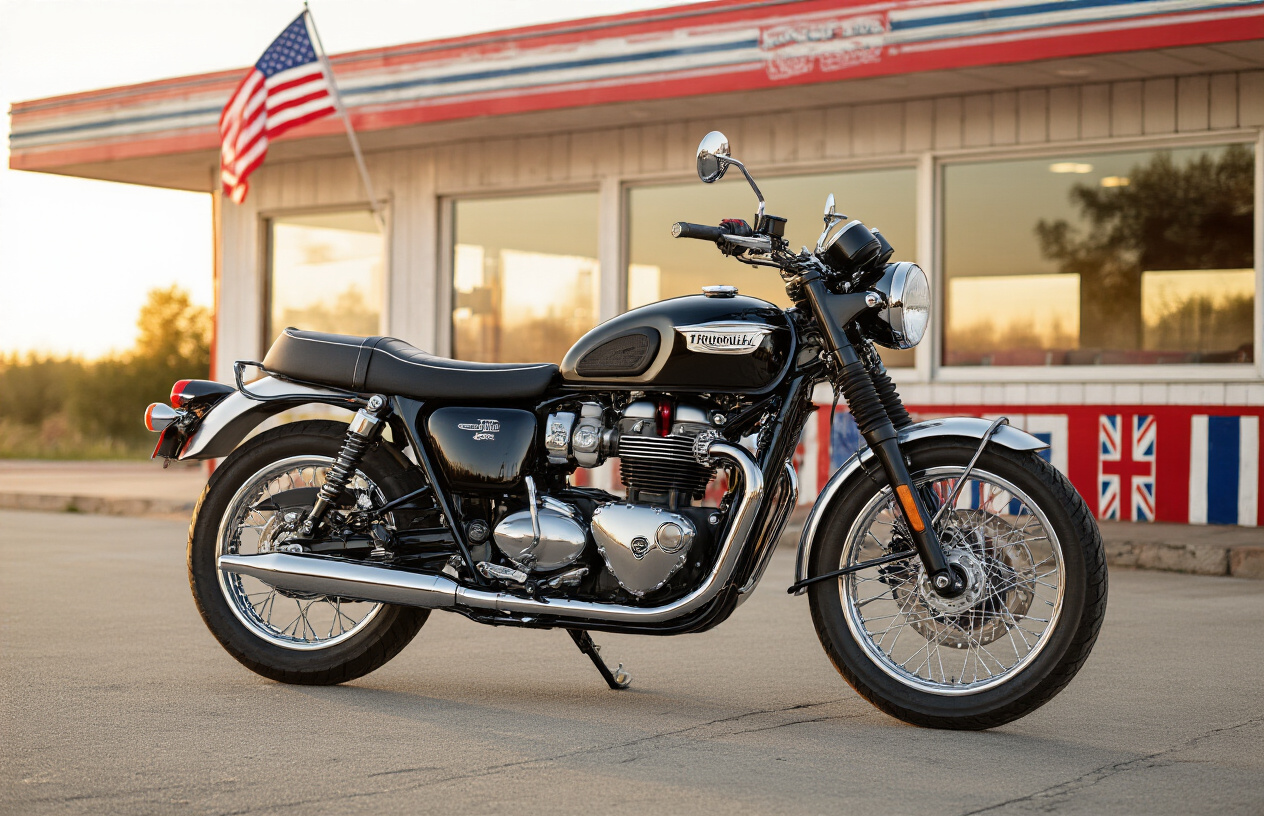
Modern classics resonating with U.S. riders
When you spot a Triumph cruising down an American highway, you’re witnessing a unique marriage of British engineering and American style sensibilities. Triumph has mastered the art of creating bikes that feel both nostalgic and cutting-edge – a sweet spot that’s hitting home with U.S. riders.
The Bonneville line? Pure magic on American roads. These bikes give riders that classic look without the headache of vintage maintenance. Riders get those timeless lines and chrome accents that turn heads at every stoplight, but with fuel injection and modern electronics that actually work when you need them to.
American riders are particularly drawn to the Thruxton and Street Twin models. They deliver that raw, stripped-down aesthetic that’s become so popular in urban centers from Portland to Brooklyn. The sound alone – that distinctive Triumph rumble – has converted countless Harley devotees.
Reliability improvements winning over skeptics
Remember when “British bikes” meant keeping a toolbox strapped to your seat? Those days are gone.
Triumph completely overhauled their manufacturing processes around 2016, and the difference is night and day. Modern Triumphs now routinely rack up 50,000+ miles with minimal issues. The electrical systems – once the butt of jokes – now stand toe-to-toe with Japanese reliability.
What’s winning over the hardcore skeptics is the engine durability. The 900cc and 1200cc twins are practically bulletproof, with many owners reporting only routine maintenance through years of hard riding. Oil leaks, once considered a “feature” of British bikes, have been engineered out of existence.
Dealership experience enhancing brand loyalty
Triumph nailed something crucial that many manufacturers miss – the dealership experience matters almost as much as the bike itself.
Walk into a Triumph dealership in America and you’ll notice it immediately. These aren’t just retail spaces; they’re community hubs. Many locations host regular ride events, maintenance clinics, and social gatherings that build genuine connections between riders.
The staff training makes a world of difference too. Triumph salespeople actually ride the bikes they sell – a refreshing change from the script-readers at some competing dealerships. They can talk intelligently about handling characteristics and real-world performance instead of just reciting specs.
Service departments have stepped up their game significantly. Wait times have shrunk, loaner programs have expanded, and the mechanics receive factory training that puts them leagues ahead of general motorcycle shops. This comprehensive approach has created a brand loyalty that borders on cultish – in the best possible way.
KTM: The Austrian Off-Road Specialist
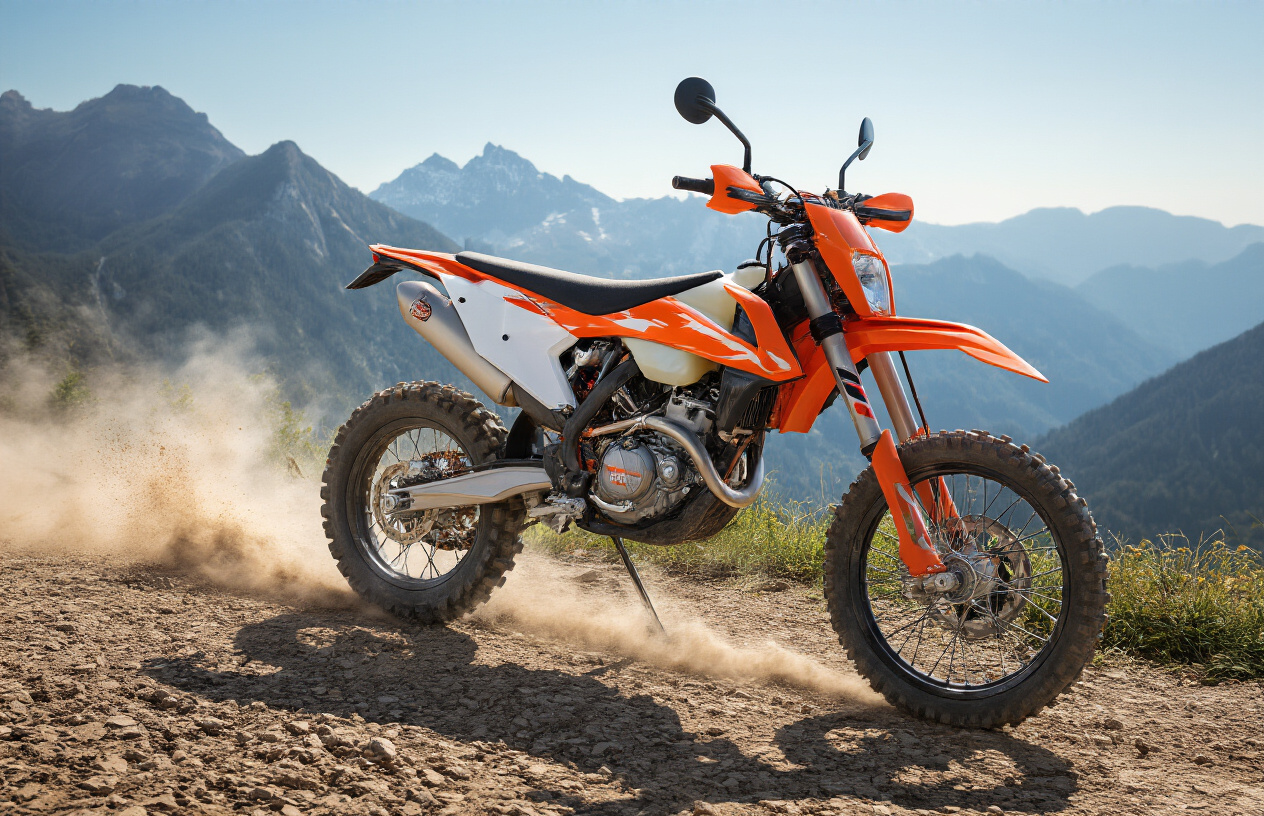
Dominating the adventure and off-road segments
KTM isn’t just another player in the American motorcycle market – they’re the orange crush that’s taken the off-road world by storm. When dirt bikes tear through American trails, that distinctive orange frame is becoming as common as stars and stripes at a Fourth of July parade.
What’s their secret sauce? KTM builds bikes that practically beg to be taken off the beaten path. Their EXC and XC models don’t just handle rough terrain – they eat it for breakfast. American riders have caught on fast, making KTM the go-to brand when asphalt just won’t cut it.
The numbers back it up too. KTM has seen double-digit growth in the US adventure segment over the past five years, outpacing nearly every competitor. Their 1290 Super Adventure and 790 Adventure models have become the benchmark that other manufacturers scramble to match.
Racing success translating to street credibility
KTM’s trophy cabinet is bursting at the seams. With 18 consecutive Dakar Rally wins, they’ve proven they build machines that can survive the world’s toughest race. That desert domination translates directly to street cred.
Americans love winners, and KTM’s racing DNA flows through every bike they sell. Their “Ready to Race” slogan isn’t just marketing fluff – it’s their engineering philosophy.
Appealing to America’s adventure-seeking riders
Americans have a deep-rooted love for exploration and the open road. KTM taps directly into that spirit with bikes built for those who see a dirt trail and think “I wonder where that goes?”
The brand has perfectly positioned itself for a country with such diverse riding environments. From Moab’s red rock to Appalachian forest trails, KTM’s offerings are tailor-made for American adventure seekers.
Their dealer network has expanded strategically across the US, focusing on areas with access to prime off-road terrain. Smart move. They know their customers aren’t just buying transportation – they’re buying weekend escapes and adrenaline rushes.
Victory and Polaris: American Innovation
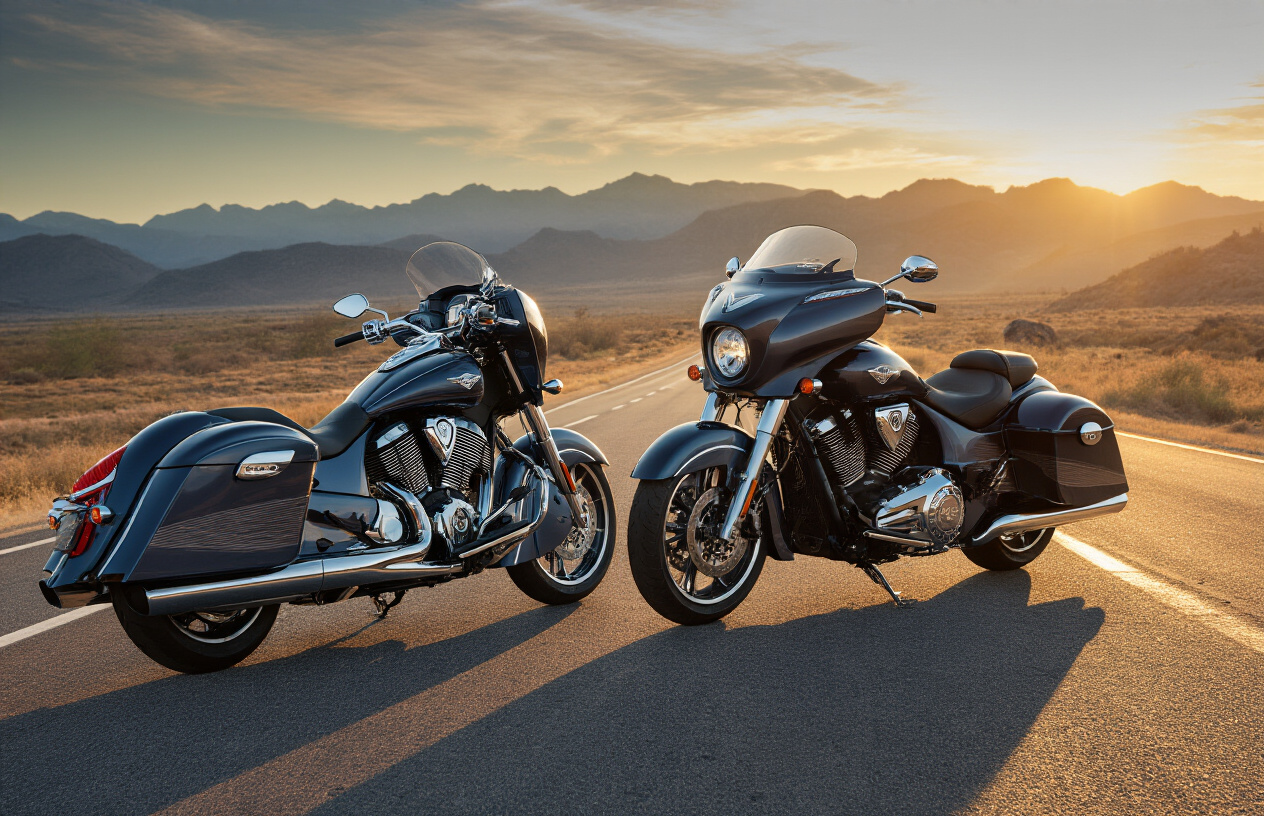
The Rise and Impact of Victory Motorcycles
Victory motorcycles burst onto the American scene in 1998 when Polaris Industries decided to challenge Harley-Davidson’s iron grip on the cruiser market. The first Victory bike—the V92C—turned heads with its modern take on classic American muscle.
What made Victory stand out? Pure innovation. They weren’t stuck in the past like some other American brands. Their motorcycles packed performance that could hang with the best Japanese and European bikes, but with that unmistakable American attitude.
Until production ended in 2017, Victory gave us game-changers like the Cross Country and the high-performance Judge. They attracted riders who wanted something different—something that wasn’t sitting in their dad’s garage.
How Polaris is Shaping the American Motorcycle Landscape
Polaris didn’t just give up after Victory. They doubled down by acquiring Indian Motorcycle in 2011—a power move that shocked the industry.
The results speak for themselves. Indian sales have skyrocketed under Polaris management. They’ve taken the heritage appeal of America’s oldest motorcycle brand and injected it with modern engineering and reliability.
Polaris brings something unique to the table: experience in powersports beyond just motorcycles. Their DNA from snowmobiles and ATVs shows up in their approach to building bikes that actually perform, not just look good.
Electric Motorcycle Offerings Changing the Game
Polaris isn’t just looking in the rearview mirror. Their LiveWire collaboration (initially under Harley-Davidson) and the introduction of all-electric Indian models prove they’re future-focused.
The company’s commitment to electric tech is impressive. They’re not just slapping batteries on frames and calling it innovation. These bikes deliver serious performance with zero emissions.
What’s exciting is how Polaris is maintaining that distinctive American motorcycle character while embracing electric technology. They understand that riders want the thrill and freedom of motorcycling regardless of what powers the wheels.
Emerging Brands Making Waves in the U.S.
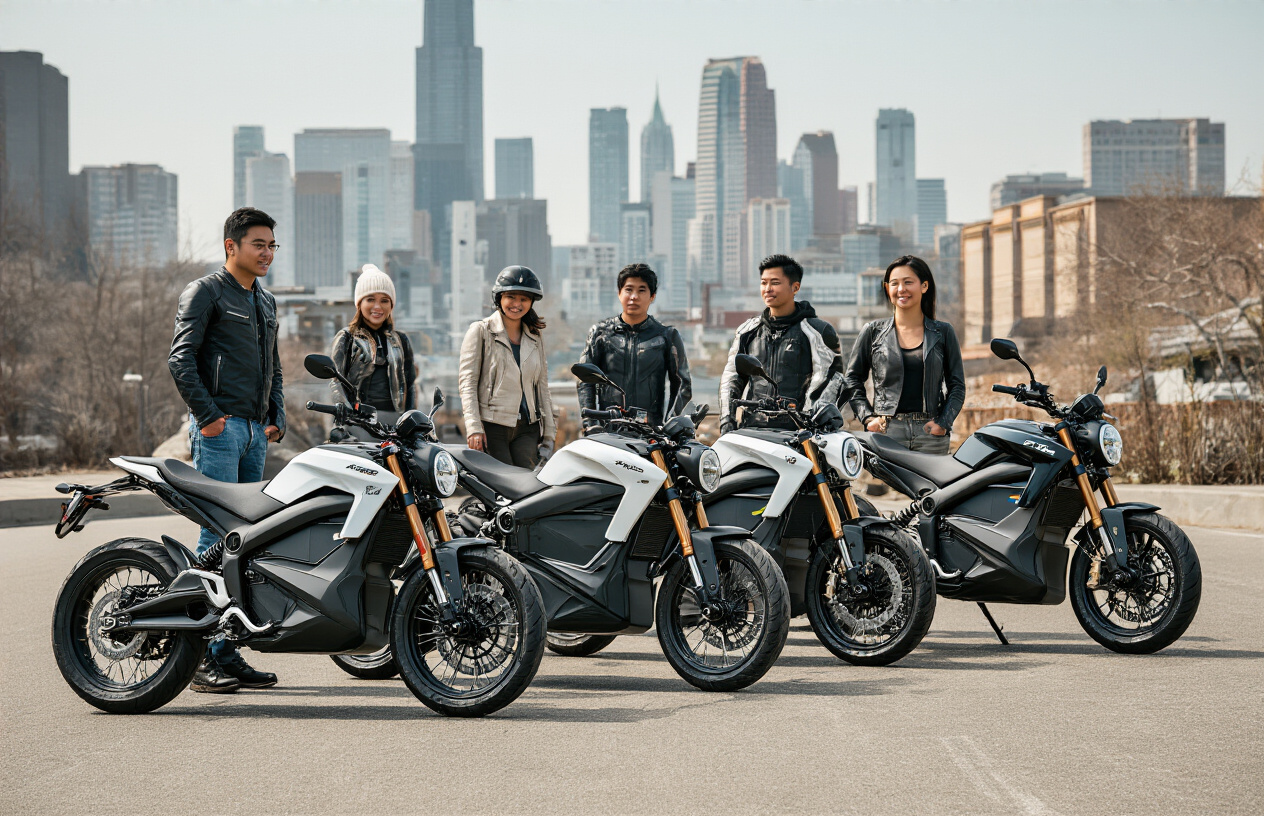
Zero Motorcycles Leading the Electric Revolution
The motorcycle world is changing, and Zero Motorcycles is at the forefront. These California-based pioneers aren’t just making electric bikes – they’re making electric bikes that riders actually want.
What makes Zero different? Power without the guilt. Their SR/F model hits 124 mph with 140 ft-lbs of torque – numbers that make traditional riders raise their eyebrows. No gears, no clutch, just twist and go with acceleration that pins you back.
American riders are noticing. Zero’s sales jumped 50% last year, with their charging network expanding across 30 states. When gas prices spike, these bikes start looking mighty attractive.
Royal Enfield’s Affordable Retro Appeal
Royal Enfield has pulled off something remarkable – making bikes that look vintage but don’t break the bank.
Their Interceptor 650 starts under $6,000 but looks like it rolled out of the 1960s. For younger riders drowning in student debt but craving style, that’s a winning combo.
The company’s U.S. dealerships have tripled since 2018. Why? They’ve tapped into that sweet spot between hipster cool and everyday practicality.
Husqvarna’s Niche Market Success
Husqvarna – that Swedish name nobody can pronounce correctly – is carving out their space with bikes that refuse to fit neatly into categories.
Their Svartpilen and Vitpilen models look like nothing else on American roads. They’re not quite sport bikes, not quite scramblers, but completely distinctive.
Sales are up 35% year-over-year, proving there’s room for weird and wonderful in the American market.
What These Newcomers Mean for the Established Players
The big boys should be sweating. These newcomers aren’t playing by the old rules.
Harley’s scrambling to launch LiveWire while Zero’s already on their fifth generation of electric tech. Indian and Victory are pushing heritage while Royal Enfield delivers it at half the price.
The playing field is leveling out. The days when only five brands dominated American highways are ending. Riders have more choices, more styles, and more price points than ever before.
For consumers, it’s a golden age. For established brands, it’s adapt or die.

The American motorcycle landscape showcases an impressive blend of domestic icons and international powerhouses. From Harley-Davidson’s undeniable cultural significance to the technical precision of Japanese manufacturers like Honda and Kawasaki, riders have access to an unprecedented variety of styles and experiences. European brands such as BMW, Ducati, and Triumph have successfully carved their niche in the market, while revitalized American classics like Indian Motorcycle demonstrate the enduring appeal of homegrown craftsmanship.
Whether you’re drawn to Harley’s rumbling V-twins, KTM’s off-road capabilities, or the innovative approaches of emerging manufacturers, today’s motorcycle market offers something for every type of rider. As technology advances and consumer preferences evolve, these top brands continue to push boundaries while honoring the freedom and adventure that motorcycling has always represented. The future of American motorcycling looks bright, built on a foundation of legendary brands that continue to define and redefine what it means to dominate the open road.

